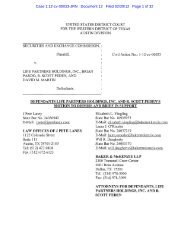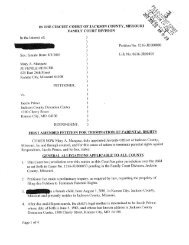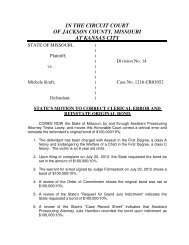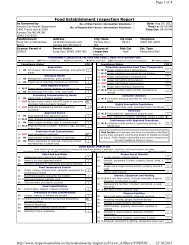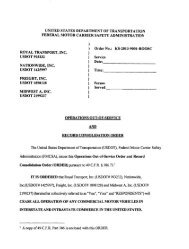Life Partners Holdings, Inc., Brian D. Pardo, R. Scott Peden, and ...
Life Partners Holdings, Inc., Brian D. Pardo, R. Scott Peden, and ...
Life Partners Holdings, Inc., Brian D. Pardo, R. Scott Peden, and ...
Create successful ePaper yourself
Turn your PDF publications into a flip-book with our unique Google optimized e-Paper software.
that affects our assumptions about remaining life expectancy, credit worthiness of the policyissuer, funds needed to maintain the asset until maturity, capitalization rates <strong>and</strong> potentialreturn.” <strong>Life</strong> <strong>Partners</strong> disclosed that it would recognize an impairment of individual policies “ifthe expected undiscounted cash flows are less than the carrying amount of the investment, plusanticipated undiscounted future premiums <strong>and</strong> capitalizable direct external costs, if any.” For thefiscal years ended February 28, 2010 <strong>and</strong> 2009, <strong>Life</strong> <strong>Partners</strong> reported impairments ofinvestments in policies of $281,882 <strong>and</strong> $151,810, respectively. For the nine months endedNovember 30, 2010, <strong>Life</strong> <strong>Partners</strong> reported impairments of investments in polices of $111,333.124. From fiscal year 2009 through the period ended November 30, 2010, contrary tothese disclosures, Defendants failed to appropriately evaluate <strong>and</strong> reduce the carrying value ofthe Company’s investments in policies to fair value. In its filings with the Commission, <strong>Life</strong><strong>Partners</strong> disclosed that impairment is “generally caused by the insured significantly exceedingthe estimate of the original life expectancy, which causes the original policy costs <strong>and</strong> projectedfuture premiums to exceed the estimated maturity value.” Yet, when Defendants evaluated <strong>Life</strong><strong>Partners</strong>’ investments in policies for potential impairment, Defendants relied on the LEs Cassidyprovided when the Company originally brokered interests in the policies, which Defendantsknew to be materially short. As the number <strong>and</strong> percentage of insureds outliving Cassidy’s LEsincreased over time, this event or change of circumstances, known to Defendants, necessitated anevaluation <strong>and</strong> assessment of the reliability of Cassidy’s LEs – a critical assumption in theCompany’s impairment analysis. Instead, the Company used the same LEs Cassidy provided atthe time <strong>Life</strong> <strong>Partners</strong> originated the interests, which Defendants knew to be underestimated. Asa result, the Company misled investors by materially understating impairment for its investmentsin life settlement policies.SEC v. <strong>Life</strong> <strong>Partners</strong> Holding, <strong>Inc</strong>., et al. Page 40Complaint



